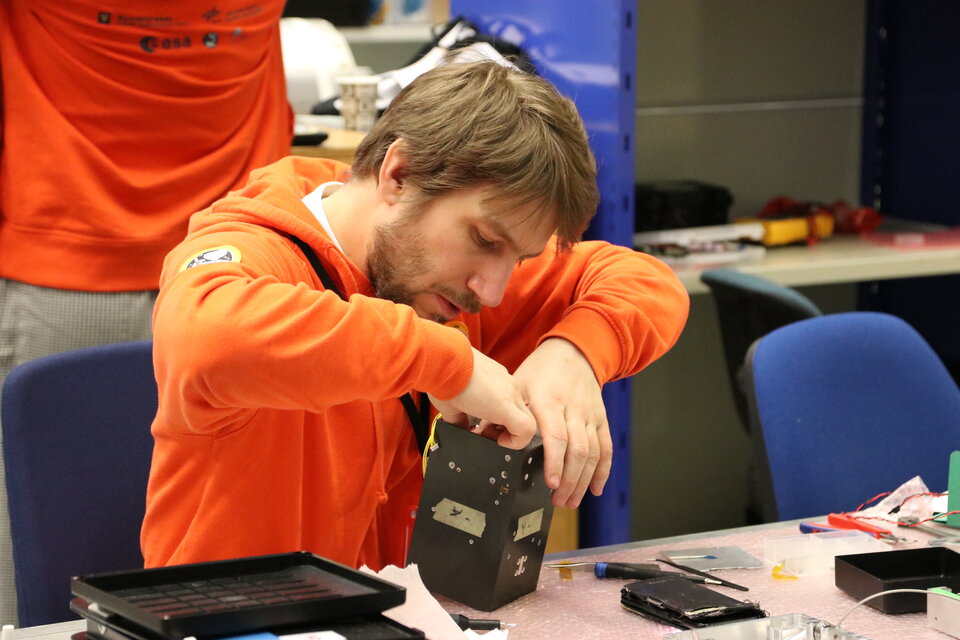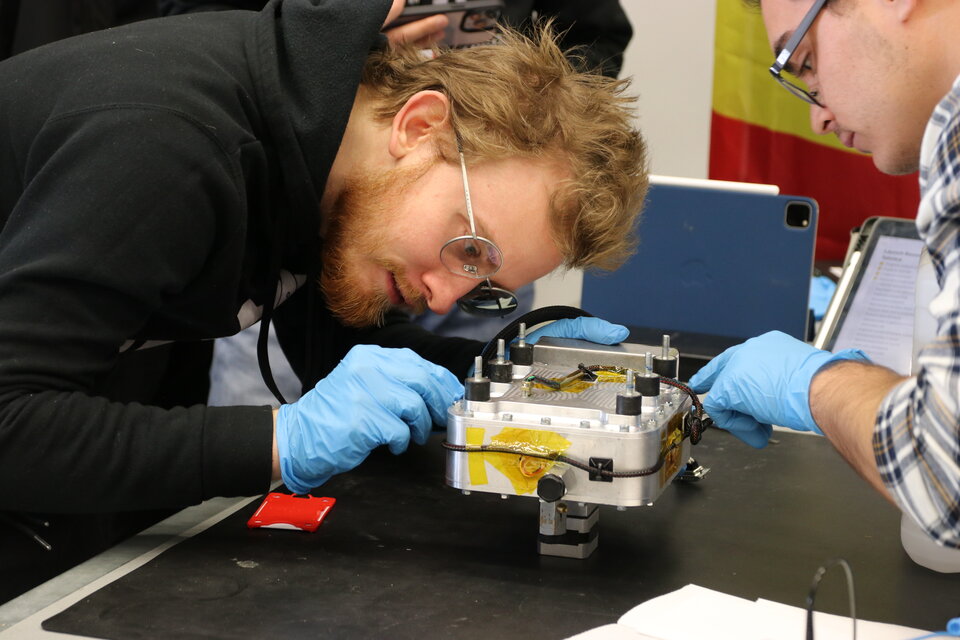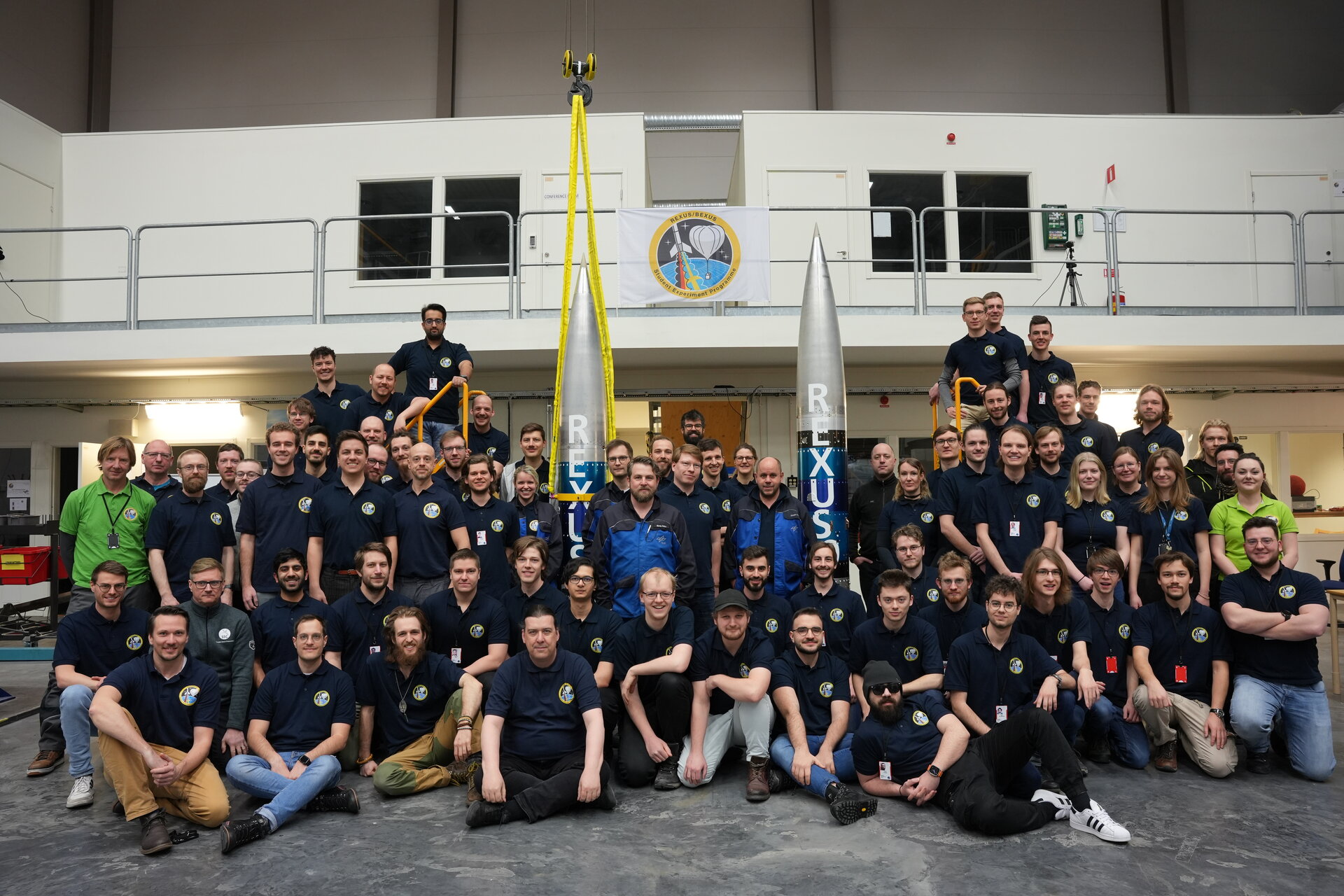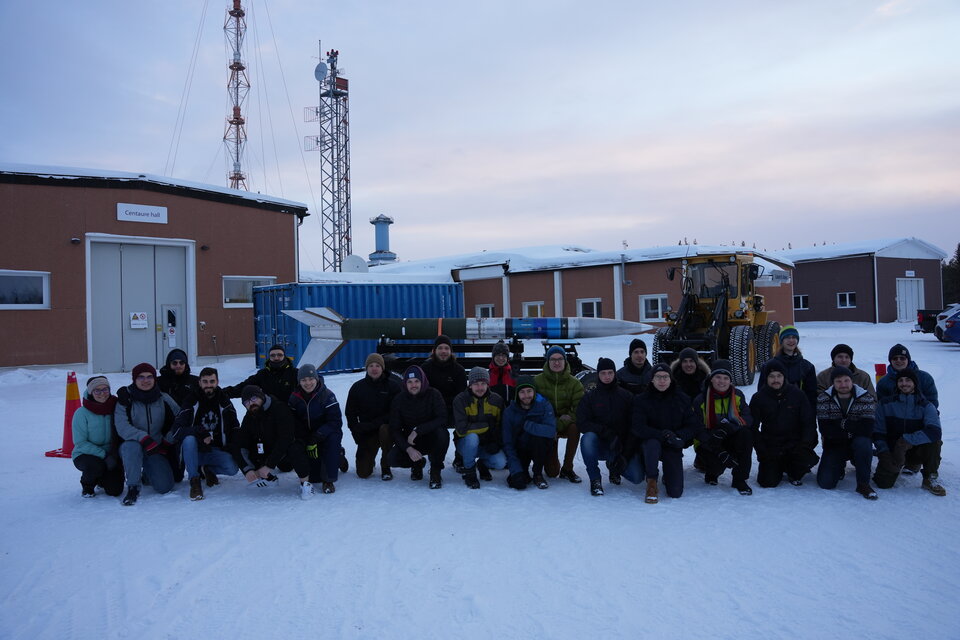Student experiments reach edge of space during REXUS 29/30 Campaign
Have you ever dreamt of launching an experiment to space with your classmates? Last week this became reality for 9 teams who successfully launched experiments on board of 2 sounding rockets from the SSC Esrange Space Center in Sweden as part of the REXUS 29/30 launch campaign. 4 teams were sponsored by ESA and the Swedish Space Agency (SNSA).
The campaign

Over the last two weeks 56 university students saw their experiments launched towards space as part of the REXUS 29/30 campaign, which launched 2 sounding rockets (REXUS 29 and 30) from the SSC Esrange Space Center in Kiruna, northern Sweden. This campaign is part of the REXUS/BEXUS Programme, which allows students from universities and higher education colleges across Europe to carry out scientific and technological experiments on research rockets (REXUS – Rocket EXperiments for University Students) and balloons (BEXUS – Balloon EXperiments for University Students).

Students were selected in December 2019, and since then they have gone through a typical life cycle of a space project, including several design reviews and test campaigns. Along the way they were followed and supported by experts from ESA and REXUS/BEXUS partners.
The teams travelled to Kiruna on 21 March. During the first week of the campaign, they prepared their experiments for flight performing communication checks, flight simulations and test countdowns. REXUS experiments are launched on an unguided, spin-stabilised rocket powered by an Improved Orion Motor with 290 kg of solid propellant. It can take 40 kg of student experiment modules to an altitude of approximately 90 km. The vehicle has a length of approx. 5.6 m and a body diameter of 35.6 cm.

REXUS 30 was launched on 29 March, with countdown starting at 03:45 CEST and lift-off at 06:30. The rocket reached an apogee of 77.3 km. REXUS 29’s turn was on 1 April: it lifted off at 06:20 and reached an apogee of 76.9 km. Rocket payloads landed back on Earth under a parachute, with payloads recovered by helicopter a few hours after touchdown. The experiments were returned to the student teams, who then presented preliminary results the last day of the campaign. On 2 February the students travelled back home, and now they will focus on analysing acquired data and preparing a final report with detailed findings.
Do you also want to participate in the REXUS/BEXUS programme and fly your experiment on a sounding rocket or stratospheric balloon? The next call for proposals is foreseen to open on 12 June 2023. More information can be found here.
The teams
The campaign involved 9 student teams, 4 of which were sponsored by ESA and the Swedish Space Agency (SNSA), whereas the others were supported by the German Space Agency (DLR).
The 4 ESA/SNSA teams are:
-
On REXUS 29:
- ECRIDA (3D Printing by Curing Resin In-orbit using UV Digital Light Processing Apparatus) from University Politehnica of Bucharest, Romania
- RaPTeX (Radiologic Particle Telescope Experiment) from UiT The Arctic University of Norway, Norway
-
On REXUS 30:
- ASTER (Attitude Stabilized Free Falling Experiment) from Luleå University of Technology, Sweden
- B2D2 (Bistable Boom Dynamic Deployment) from Royal Institute of Technology (KTH), Sweden
The 5 DLR teams are:
-
On REXUS 29:
- DAEDALUS2 – Julius Maximilian University of Würzburg, Germany
- HERMESS (Hull applied ElectroResistive Measurement of Structural Strains) – Bundeswehr University Munich, Germany
- S Cephei (Suspension of Carbon Nanotubes under dielectrophoretical Influence) – Technical University of Dresden, Germany
-
On REXUS 30:
- µMoon (Verification and Simulation of Enceladus´ Plume Models) – Aachen University of Applied Sciences, Germany
- IMFEX (ISRU MoonFibre Experiment) – RWTH Aachen University, Germany
About the REXUS/BEXUS Programme
The REXUS/BEXUS programme is realised under a bilateral Agency Agreement between the German Aerospace Center (DLR) and the Swedish National Space Agency (SNSA). The Swedish share of the payload has been made available to students from other European countries through a collaboration with the European Space Agency (ESA). EuroLaunch, a cooperation between the Swedish Space Corporation (SSC) and the Mobile Rocket Base (MORABA) of DLR, is responsible for the campaign management and operations of the launch vehicles. Experts from DLR, SSC, ZARM and ESA provide technical support to the student teams throughout the project. REXUS and BEXUS are launched from SSC, Esrange Space Center in northern Sweden.



